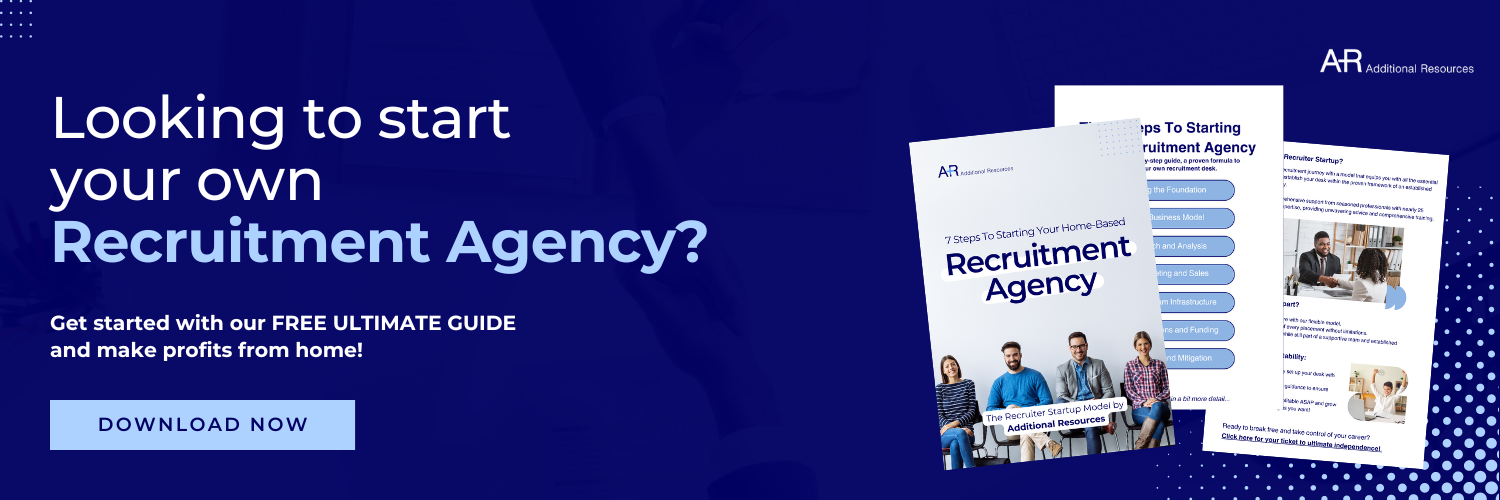Imagine a job market where knowing someone on the inside is your golden ticket. In 2024, a study showed that over 70% of jobs were landed through connections, leaving many skilled individuals in the dark. It’s a frustrating reality. This reality highlights a significant gap in diversity and inclusion in recruitment, as it leaves out those without the “right” contacts, despite their potential and innovative ideas.
But what if we could change that? This guide is here to show you how. It’s packed with simple, actionable steps to make hiring more inclusive, ensuring people from all walks of life get a fair shot. By opening up to diverse talents, companies can strengthen their teams and promote a culture of diversity and inclusion.
Let’s explore together how connecting with a broader community can benefit everyone, making recruitment fairer and more effective. It’s time to level the playing field and embrace the richness of diversity in the workforce.
Recruit for All: Diversity and Inclusion in Recruitment
When we bring people from all walks of life into our teams, magic happens. Imagine a workplace where every voice matters and different perspectives lead to innovative solutions. This isn’t just a nice idea—it’s a proven path to success. Studies show that embracing diversity and inclusion isn’t just good ethics; it’s great for business.

According to a McKinsey study, corporations that focus on being inclusive and diverse are 35% more likely to surpass competitors in performance. They gain a competitive advantage because customers appreciate them more.
Also, research by HBR states diverse companies are 70% more likely to acquire new markets. Teams with diversity are also 87% better at making decisions. This data shows the importance of inclusive hiring and fostering diversity in recruitment to boost profits, market reach, and decision-making.
How to Build a Diversity and Inclusion Strategy?
Creating a strong diversity and inclusion strategy takes careful thought and planning. If done right, it can lead to a fair and welcoming workplace, helping organisations achieve greater success.
Here are some steps to consider when developing a diversity and inclusion strategy.
Secure Leadership Commitment
As a business owner, your commitment to diversity sets the standard and leads the way.
- Reflect on how your own experiences and biases could impact strategy.
- Seek candidates from varied backgrounds for your recruitment team to incorporate different perspectives naturally.
- Meet with your leadership regularly to align on goals and brainstorm challenges with fresh insights.
- Define concrete success metrics like % of women or minority representatives in senior roles.
Measuring progress will show your stakeholders how your vision is becoming a reality over time.
Conduct an Assessment and Establish a Baseline
When reviewing your business, examine your client base patterns too. Before developing your strategy, consider the following:
- Audit your current recruitment processes and company culture.
- Examine who your clients and candidates have been to uncover any patterns. You’ll want hard numbers, so review your applicant tracking system.
- Consider setting up candidate and client surveys to gather first-hand insights anonymously.
- Look for opportunities like biased language that may discourage diversity without intending to.
Establishing a clear baseline will empower you to improve, track progress, and showcase your efforts to potential partners and clients.
Engage Stakeholders
Engage stakeholders both inside and outside your organisation to reinforce your strategy.
- Find Champions – who is excited about this important work and willing to partner?
- Start inviting your team members to focus groups to understand their unique experiences and gain buy-in to develop solutions together.
- Consider advisory boards with clients, candidates, and community leaders who represent diversity.
- Show real business benefits and call to their own values effectively.
Meeting the needs of stakeholders turns them into advocates, helping to extend your message and collaborate on projects crucial to diverse communities.

We understand the intricacies involved in assembling a workforce where every individual feels acknowledged and valued. With services like Recruitment Desk, Training, and Support, we’re here to guide you through nurturing a more diverse team. Don’t let another day pass without taking action to build an inclusive organization. Contact us now!
Define Clear Goals and Objectives
Establishing clear goals will direct your efforts more effectively.
- Look at metrics that matter – to you and your business. Perhaps it’s increasing the hiring of minorities over the next year by 5%. You may also aim to have diverse representation shortlisted for 10% of open roles.
- Get more granular by function or level, too, if needed.
- Tracking progress over time keeps you accountable. Consider qualitative objectives also – will candidates from underrepresented groups refer colleagues once feeling welcomed?
- Define what success looks like so you can point to achievements and areas of improvement.
Clear goals translate intangible values into tangible strategies people can work towards.
Implement Education and Training
Education will promote understanding within your business.
- Find affordable, high-quality training options to expand perspective and limit unconscious biases.
- Start by learning together as a team and regularly revisiting lessons.
- Ensure all stakeholder-facing staff are properly equipped too through empathetic exercises.
- Consider sensitivity readings on your marketing and employer brand.
- For candidates, structured training on your processes helps ensure equal treatment.
- You might offer externship opportunities to build diverse networks to support your strategy.
As a recruitment consultant working directly with both candidates and clients, ongoing education within your network cultivates the inclusive environment essential for attracting and keeping diverse talent.
Ensure Legal Compliance
As the owner, the ultimate responsibility for ensuring your business meets legal requirements falls on you. It’s important to make sure the following

- Familiarise yourself with discrimination laws regarding gender, race, and disability status.
- Your recruitment processes must avoid both direct and indirect discrimination.
- Have an updated equal opportunities policy and statement communicated.
- Request regular diversity training so your team fully understands what’s legally required and what diverse candidates may experience.
- Covering yourself includes documenting hiring decisions for defensibility.
- You should seek professional help as needed.
A compliant strategy protects your business and those it serves. Staying informed is crucial for fostering inclusive practices that attract diverse talent.
Frequently Asked Questions
What Is Diversity and Inclusion in HR?
Diversity refers to how people differ, including background, identity, experience, and opinions. Inclusion in HR means embracing these differences through equitable hiring practices, compensation, promotion, training programs, etc. It ensures all groups of people are respected, valued, and have equal access to opportunities.
How Do You Recruit People From Diverse Backgrounds?
There are several effective strategies to recruit more diversely.
- Post jobs in various sources where different groups may see them.
- Use inclusive language in all postings.
- Partner with organisations focused on underrepresented groups.
- Evaluate application and interview processes for unintended barriers and remove them if possible.
- Diversify hiring teams and interviewers.
- Analyse current employee networks and expand to new ones.
- Promote an inclusive employer brand through imagery and messaging.
- Provide accommodations as needed.
- Consider targeted outreach and build relationships to refine diverse recruitment.
Why Can It Be Hard to Recruit a Diverse Workforce?
Companies may rely too heavily on their usual networks, leading to the same types of candidates. Some groups may only see roles advertised or feel welcomed with direct outreach. Unconscious bias can influence decisions at each stage. It requires ongoing efforts like training and accountability to identify and address obstacles.
Conclusion
In summary, promoting diversity and inclusion in recruitment benefits everyone. Companies that try inclusive hiring gain fresh ideas and tap talented people.
Workers feel valued in environments welcoming all backgrounds. As teams strength through diversity, businesses see competitive advantages like increased profits. Moving forward, all recruitment should aim to connect to varied communities.
Are you ready to start building a more diverse workforce? Contact our Recruiter Startup team to learn how to start your own Recruitment Desk today.


